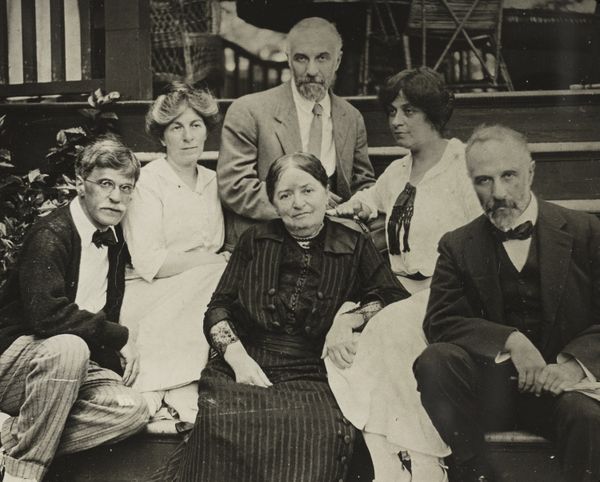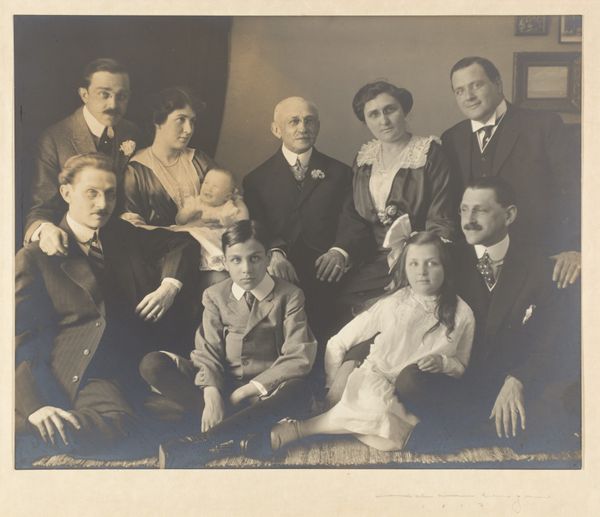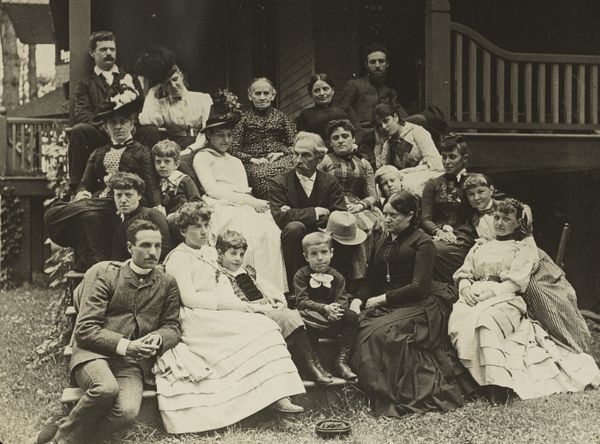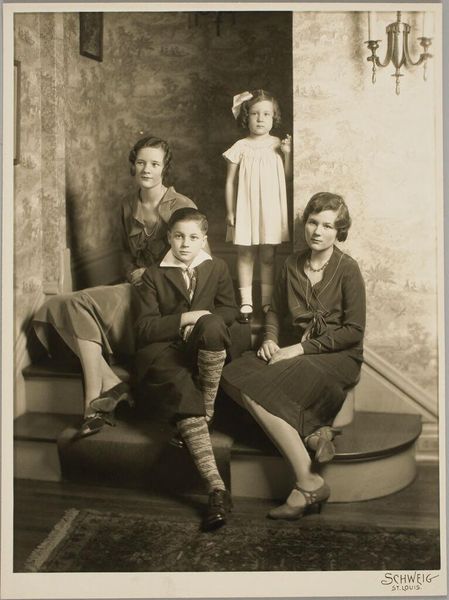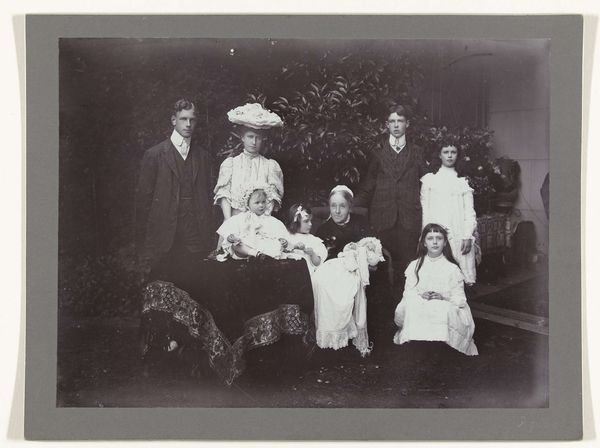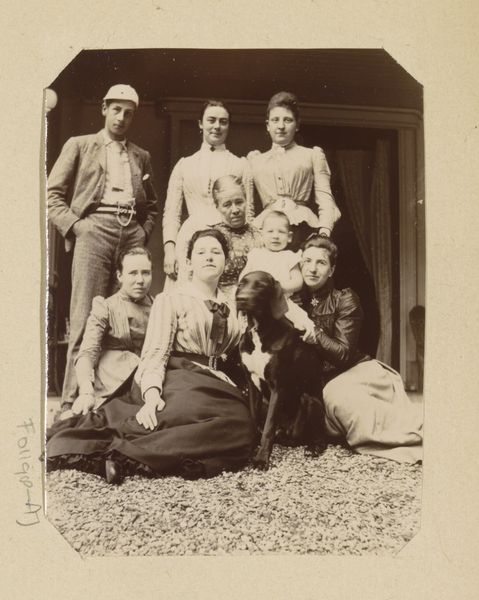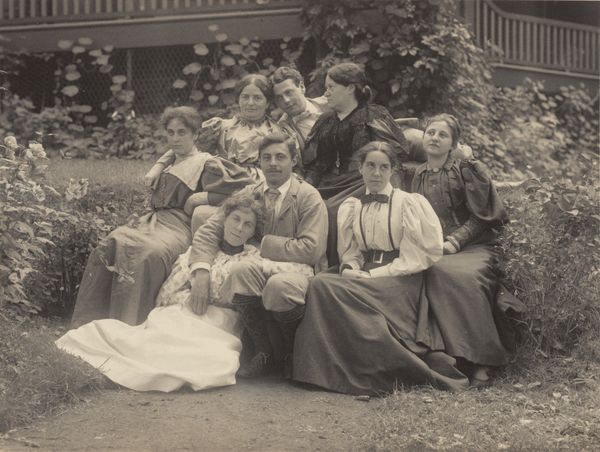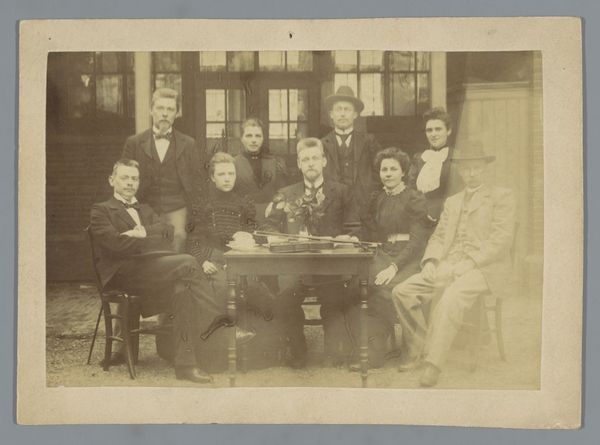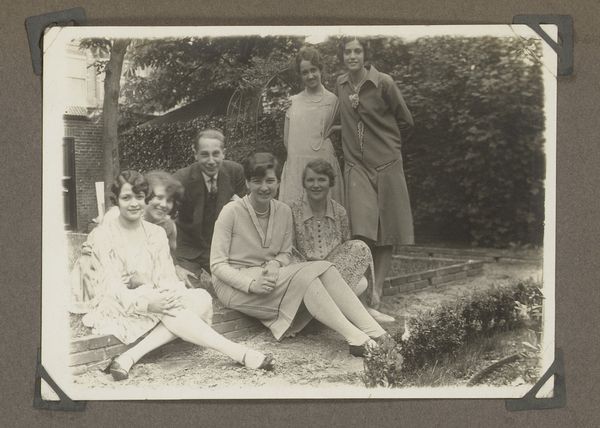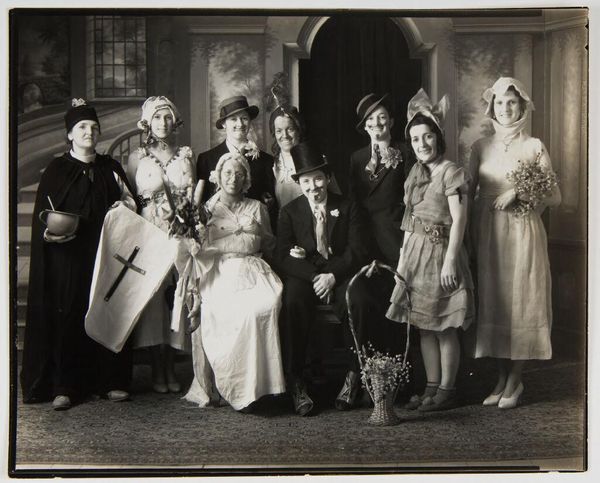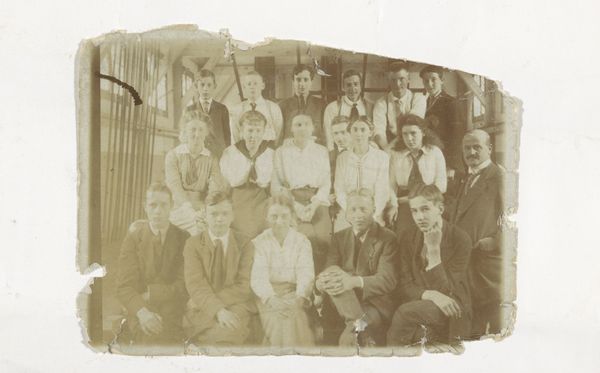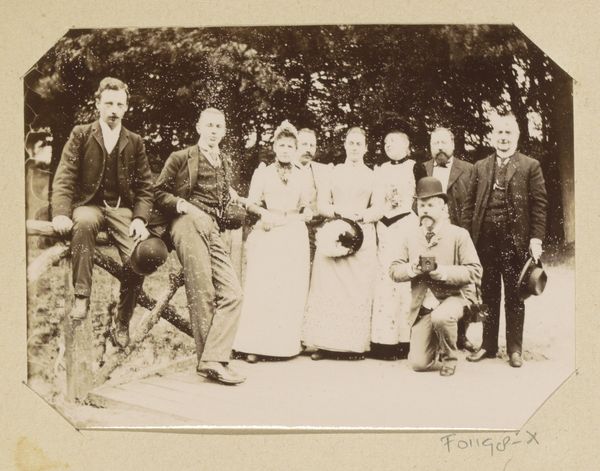
Untitled (Stieglitz's mother Hedwig with grandchildren on Oaklawn steps) c. 1916
0:00
0:00
photography, glass, gelatin-silver-print
#
portrait
#
pictorialism
#
archive photography
#
photography
#
glass
#
historical photography
#
old-timey
#
group-portraits
#
cultural celebration
#
gelatin-silver-print
#
united-states
#
modernism
Dimensions: 3 1/4 × 4 in.
Copyright: Public Domain
Curator: Alfred Stieglitz's circa 1916 gelatin-silver print, "Untitled (Stieglitz's mother Hedwig with grandchildren on Oaklawn steps)," offers us a glimpse into a very particular, turn-of-the-century American experience. Editor: It strikes me immediately how posed yet utterly candid everyone appears, arranged on those steps. The tonal range is so beautiful, almost painterly, in the way the light interacts with the textures of clothing and skin. Curator: Indeed, Stieglitz, deeply influenced by Pictorialism, manipulated the photographic process to achieve that very effect, blurring lines between painting and photography. We can analyze how class and gender intersect here. Consider Hedwig at the center. As a matriarch in an affluent family, she represents a certain social stability. The women’s garments, though seemingly simple, hint at leisured lives reliant on complex systems of labor. Editor: Absolutely. You see the craft in the tailoring of those outfits; even the children's clothes are a product of considerable labour. And consider the gelatin-silver printing process itself. The alchemy of it—the coated glass, the darkroom—each step involves specialized knowledge and physical work. Curator: That reminds us to consider Stieglitz’s own labor too, both the technical aspects of producing this image and his artistic agenda of elevating photography to fine art. What I find fascinating is the sense of expectation, a visual tension embedded in the subjects. Their collective gaze seems to challenge our perception of American idealism versus the lived reality. Editor: You feel that sense of deferred expectation and constraint in their bodies and poses. It reflects the limitations of industrial production and what would, materially, give rise to artistic photography through industrial advancements. The making of images suddenly became possible because of chemical refinement and advancements. Curator: So true! It leaves you reflecting on progress, class structures, and familial bonds—themes as relevant today as they were a century ago. Editor: A photograph documenting its own materiality, making it still fresh as an aesthetic document of the late 19th, early 20th century’s transformation by way of manufacturing.
Comments
No comments
Be the first to comment and join the conversation on the ultimate creative platform.
